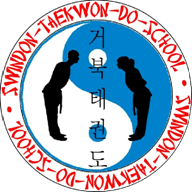



|
What I’ve discovered
After King Taejong died in 1418, Prince Choongnyung ascended the throne as he had been made heir apparent over his two brothers, when his princely qualities had proven superior.
The new king became King Sejong the Great (1397-1450) the fourth king of the Yi Dynasty (sometimes Lee dynasty, also Chosun/Joseon dynasty) many improvements were introduced by King Sejong, and a great many scientific advancements and inventions occurred during his reign.
King Sejong had an observatory built in the palace grounds in 1434.
He encouraged scientists to invent new tools the products of which included the rain gauge, astronomical clocks, sundials and water clocks.
King Sejong is also said to have improved the use of the beacon fires that were spread throughout the country.
The most important advancement was the creation of the Korean alphabet, Hangul, King Sejong decided that the Korean people needed their own written language, at this point Ancient Chinese was used and as it consisted of 30,000 characters, it was not accessible to the majority of people.
Hangul (created in 1443) is a phonetic alphabet and originally consisting of 28 characters, it was known as Hunmin Chong’um, meaning ‘the correct sounds to instruct the people’, and was circulated in 1446.
Some of the educated elite were reluctant to accept this new writing system, but King Sejong insisted on its use and opened a publishing house producing books in the new Korean script, including a Korean dictionary.
Over time four of the Hangul characters were dropped from use and in 1912 it was given the name Hangul meaning ‘Great script’.
King Sejong wanted to improve life for the common people and one of the works published was a farmer’s handbook, the new written form enabled both women and commoners to become more educated.
King Sejong tried to control corruption, reward good work/deeds and raise moral standards throughout the country.
After more than 30 years on the throne King Sejong The Great is still remembered today as a King committed to improving the education of the people.
9th October is Hangul day.
15th May is King Sejong day as it was Sejong’s birthday.
|
|
In his encyclopaedia General Choi told us: The pattern is named after the greatest Korean King, Se-Jong, who invented Han-Gul, the Korean alphabet, in 1443. King Se-Jong was also a noted meteorologist. The diagram represents the king, while the 24 movements refer to the 24 letters of the Korean alphabet. |